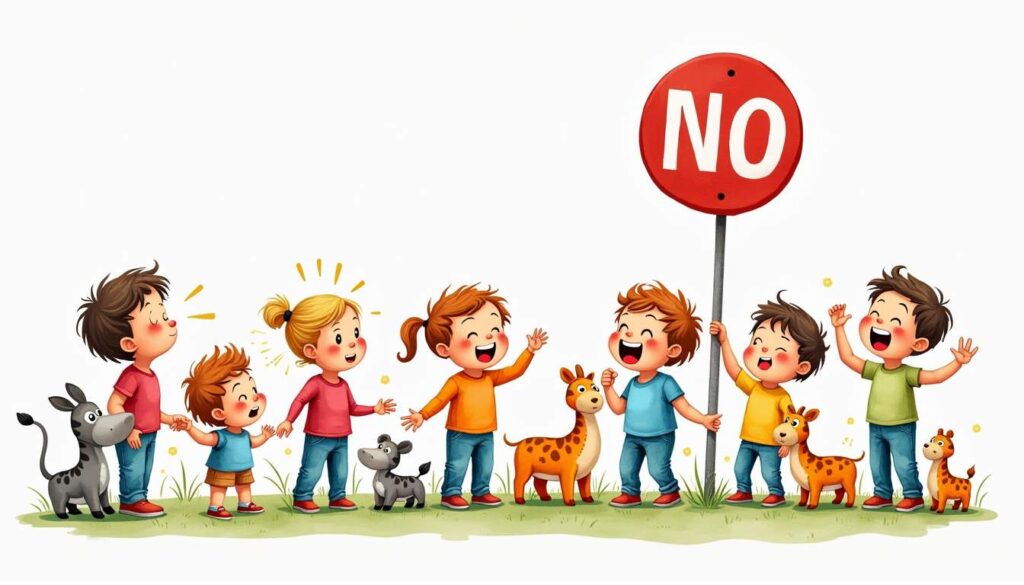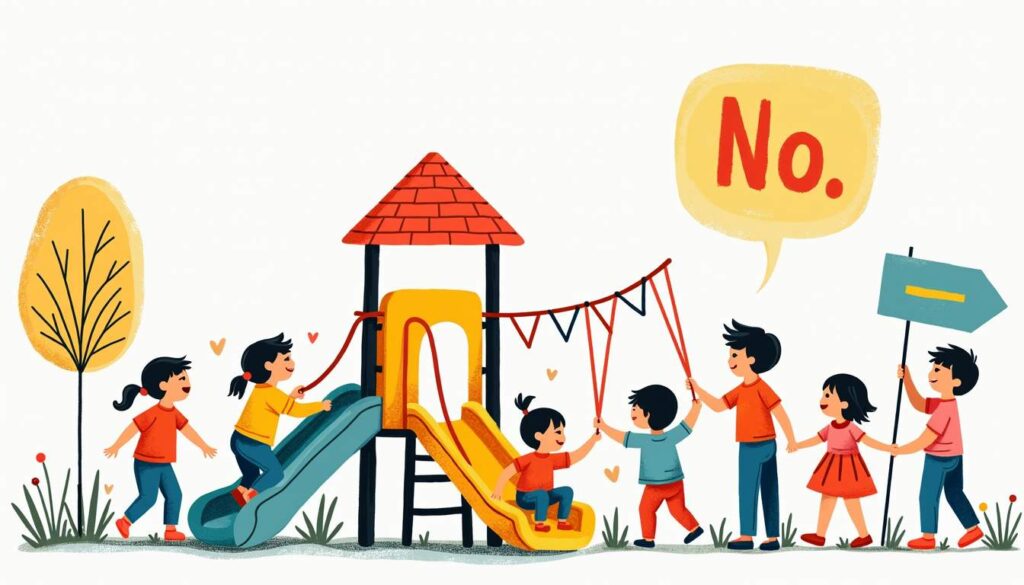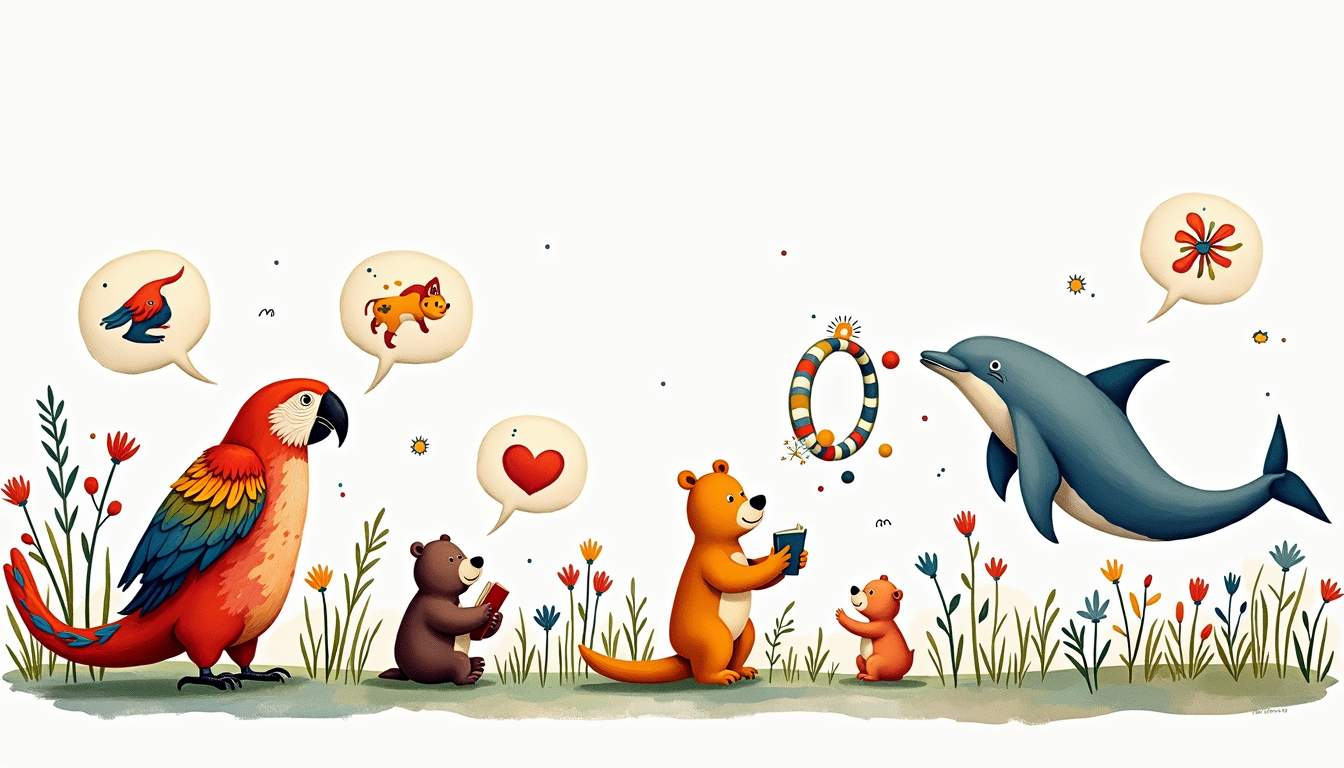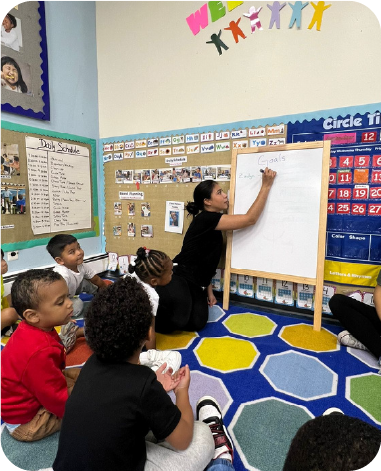Every parent has experienced the delightful yet exasperating phase when their toddler seems to have a singular response to almost everything: “No!” This simple word can feel like a toddler’s battle cry, echoing through homes and playgrounds alike. But why do toddlers say ‘no’ so frequently? Understanding the reasons behind this behavior can help parents navigate this challenging yet crucial stage of development.
The Developmental Stage of ‘No’
During the early years of life, toddlers are undergoing significant cognitive and emotional development. This period is often marked by the emergence of independence and self-assertion. Saying ‘no’ is one of the ways toddlers express their growing sense of autonomy.
Assertion of Independence
As toddlers begin to understand their own preferences and desires, they start to assert themselves. This newfound independence is a natural part of growing up. When a child says ‘no,’ they are often trying to communicate their own choices, whether it’s about what to wear, what to eat, or what activity to engage in. This assertion is a vital step in their development, as it helps them learn to navigate the world around them.
For many toddlers, the word ‘no’ becomes a powerful tool. It is not just a refusal; it is a statement of identity. By saying ‘no,’ they are establishing boundaries and learning that they have control over their own lives, even in small ways. This self-assertion can also be seen in their interactions with peers, where they may refuse to share toys or take turns, further reinforcing their sense of self and agency. Such moments are crucial for building confidence and understanding social dynamics, as toddlers learn to articulate their needs and preferences in various contexts.
Exploring Boundaries
Another reason toddlers frequently say ‘no’ is that they are exploring boundaries. Children at this age are curious about limits and often test them as a way of understanding their environment. When a toddler says ‘no’ to a request, it can be a way of checking how far they can push those boundaries.
This behavior can be frustrating for parents, who may feel their authority is being challenged. However, it’s important to recognize that this is a normal part of development. By testing limits, toddlers learn about rules, consequences, and the expectations of those around them. This exploration is not merely about defiance; it is an essential learning process that helps them develop critical thinking skills. For instance, when a child refuses to wear a jacket on a chilly day, they may soon realize the discomfort that comes with their choice, leading to a better understanding of cause and effect. Additionally, these experiences can foster resilience, as toddlers learn to navigate the outcomes of their decisions, both positive and negative, in a safe environment.
Communication Skills and Language Development
Language development is another critical factor in the frequency of ‘no’ in toddler speech. As toddlers learn to communicate, they often latch onto simple words and phrases that convey their feelings effectively. This early stage of language acquisition is marked by a fascination with sounds and the power of words, where even a single syllable can carry profound meaning in the eyes of a child.

Simplicity of ‘No’
The word ‘no’ is short, easy to say, and carries a clear meaning. For toddlers who are still developing their vocabulary, it serves as a convenient catch-all response. Instead of crafting a more nuanced reply, they can simply say ‘no’ to express their feelings or preferences. This simplicity can lead to an over-reliance on the word. As toddlers become more comfortable with language, they will gradually expand their vocabulary and learn to express themselves in more varied ways. Until then, ‘no’ becomes their go-to response.
Interestingly, the frequent use of ‘no’ can also serve as a form of empowerment for toddlers. As they navigate a world that often feels overwhelming and filled with choices, saying ‘no’ allows them to assert their autonomy and establish boundaries. This assertion is not just about rejecting something; it’s a critical part of their developmental journey, helping them to understand their likes and dislikes, which is essential for building self-identity.
Imitation and Social Learning
Children are natural imitators. They learn by observing the behaviors and reactions of those around them, particularly their parents and caregivers. If a toddler hears the word ‘no’ frequently in their environment, they are likely to adopt it as part of their own vocabulary. This imitation can also extend to the emotional tone associated with the word. If parents respond with frustration or laughter when a child says ‘no,’ toddlers may learn to associate that word with a specific reaction, reinforcing its use in their communication.
Moreover, the context in which ‘no’ is used can significantly influence a child’s understanding of the word. For instance, if a parent consistently uses ‘no’ in response to certain behaviors, toddlers may begin to comprehend the boundaries of acceptable actions. This social learning process is crucial, as it helps them navigate social interactions and understand the implications of their choices. As they observe the reactions of adults and peers, toddlers start to grasp the nuances of communication, which will lay the groundwork for more complex conversations in the future.
Emotional Expression and Regulation
Emotional development plays a significant role in why toddlers say ‘no’ so often. As they navigate their feelings, they may use ‘no’ as a way to express frustration, discomfort, or even excitement.

Frustration and Overwhelm
When toddlers find themselves in overwhelming situations—be it a crowded room, a new environment, or an unexpected change—they may resort to saying ‘no’ as a way to cope with their feelings. This response can serve as a protective mechanism, allowing them to assert control over their surroundings.
In these moments, it’s essential for parents to recognize that the ‘no’ is often a signal of deeper emotions. Understanding the context in which a toddler says ‘no’ can help caregivers respond with empathy and support, rather than frustration.
Testing Emotional Responses
Additionally, toddlers may say ‘no’ to gauge emotional reactions from their parents or caregivers. This behavior is part of their social learning process. By observing how adults respond to their refusals, toddlers learn about emotional dynamics and relationships.
For instance, if a toddler says ‘no’ to a request and receives a strong reaction, they may repeat the behavior to see if they can elicit the same response. This testing can be a way for them to understand the power of their words and the emotions they can evoke in others.
Strategies for Managing the ‘No’ Phase
While the phase of frequent ‘no’ can be challenging, there are several strategies that parents can employ to manage this behavior effectively. Understanding the underlying reasons for a toddler’s refusal can help caregivers respond in ways that promote positive communication.

Offer Choices
One effective strategy is to offer choices. Instead of presenting a directive that may elicit a ‘no,’ parents can provide options that allow toddlers to feel a sense of control. For example, instead of saying, “It’s time to put on your shoes,” a parent might say, “Would you like to wear the red shoes or the blue shoes?” This approach empowers toddlers to make decisions while still guiding them toward the desired outcome.
By providing choices, parents can reduce the likelihood of a negative response and encourage cooperation. This method also reinforces the toddler’s sense of autonomy, making them feel valued and respected.
Use Positive Language
Another useful technique is to frame requests in a positive light. Instead of saying, “Don’t touch that,” a parent could say, “Let’s play with this toy instead.” Positive language can help redirect a toddler’s attention and reduce the chances of a ‘no’ response.
By focusing on what the child can do rather than what they cannot, parents can create a more constructive environment for communication. This shift in language can lead to more positive interactions and encourage toddlers to engage willingly.
Understanding the Bigger Picture
It’s essential to remember that the ‘no’ phase is just one part of a toddler’s development. This behavior is not inherently negative; rather, it is a sign of growth and exploration. Understanding the bigger picture can help parents navigate this challenging time with patience and empathy.
Normal Developmental Milestone
The frequent use of ‘no’ is a normal developmental milestone that many children experience. It’s a sign that they are learning to express themselves and understand their own desires. Recognizing this behavior as a natural part of growing up can help parents approach it with a more positive mindset.
Moreover, this phase is often temporary. As children grow and develop their communication skills, they will learn to express their feelings and preferences in more varied and nuanced ways. The key is to provide support and guidance during this transitional period.
Building a Foundation for Future Communication
Ultimately, the way parents respond to a toddler’s ‘no’ can lay the groundwork for future communication. By modeling respectful and empathetic responses, caregivers can teach children how to express themselves effectively while also respecting the feelings of others.
Encouraging open dialogue and validating a child’s feelings can foster a strong foundation for healthy communication as they grow. This approach not only helps toddlers navigate their current challenges but also equips them with the skills they need for future interactions.
Conclusion
The phase of saying ‘no’ is a significant aspect of toddler development, reflecting their growing independence, communication skills, and emotional expression. While it can be a challenging time for parents, understanding the reasons behind this behavior can lead to more effective strategies for managing it.
By offering choices, using positive language, and recognizing the developmental milestones at play, caregivers can navigate this phase with greater ease. Ultimately, the ‘no’ phase is a natural part of growing up, and with patience and understanding, it can be a valuable opportunity for growth—for both toddlers and their parents.
As toddlers learn to assert themselves and communicate their feelings, they are laying the groundwork for healthy relationships and effective communication in the future. Embracing this phase with empathy and support can make all the difference in fostering a positive environment for growth and exploration.










